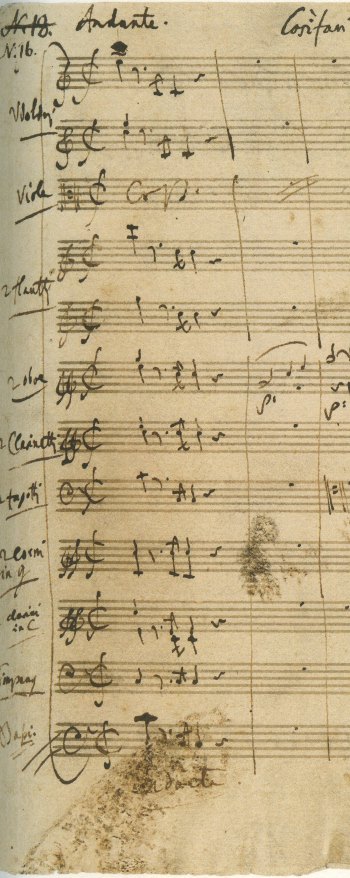
distributed by:
OMI - Old Manuscripts & Incunabula
tel/fax 212/ 758-1946
http://www.omifacsimiles.com
immels@earthlink.net
OMI - Old Manuscripts & Incunabula
tel/fax 212/ 758-1946
http://www.omifacsimiles.com
immels@earthlink.net
Wolfgang Amadeus MOZART
Così fan tutte K.588
_________________________________________
Così fan tutte, ossia, La scuola degli amanti, K.588. Facsimile of the Autograph Score, Staatsbibliothek zu Berlin-Preussischer Kulturbesitz, Biblioteka Jagiellonska Kraków (Mus. ms. autogr. W.A. Mozart 588), Stadt- und Universitätsbibliothek Frankfurt am Main (Mus. Hs 2350). Introductory Essay by Norbert Miller; Musicological Introduction by John A. Rice.
_________________________________________
Mozart Operas in Facsimile, 5. Los Altos, 2007. Oblong, 4°, 3 vols, 750 pp. Full-color reproduction of the autograph score. This popular opera buffa exploring romantic love and sexual attraction has delighted audiences for more than two hundred years. Compared to the two earlier operas with Da Ponte's collaboration, there is scant detailed evidence regarding the genesis of Così fan tutte. Interestingly, in Mozart's own autograph catalog "Vereichnüß aller meiner Werke" a single number from the opera —"An aria intended for the opera Così fan tutte... Rivolgete à me lo sguardo"—preceeds the entry for the complete opera, somewhat an anomally for the thematic catalogue. In any case the composition of the opera seems to have occurred over a short period of time and in keeping with other operas, Mozart composed and revised it while rehearsals were already going on. Different ink tints in the autograph (showing vocal lines with bass in one ink tint and orchestration in another) support this idea and agrees with testimony by Eybler who supervised rehearsals for singers from "parti cantanti". Besides this aspect of the autograph there are also some interesting musical changes, carefully documented in the introductory essay by John A. Rice. After an instrumental rehearsal of the opera on 20 January 1790 in the company of Haydn, the premiere took place six days later in Vienna's Burg Theater, Mozart conducting, and performed by the best singers the Royal-Imperial National and Court Theater had to offer. It was an immediate successs, being repeated numerable times and revived as well in the decades after the composer's death. A copyist manuscript from the atelier of Wenzel Sukowtay—Österreichische Nationalbibliothek, Ms. OA 146—basically a copy of Mozart's autograph is also an important source of the opera, showing how it evolved in later years; Ms. OA 146 is the principal source for most of the music missing from the autograph. It also serves as the most reliable record of changes made to the opera during the rehearsals and performances, some by Mozart or with his approval. Parts of Ms. OA 146 as well as surviving sketches and drafts are reproduced in this facsimile. Bibliophile edition, in three volumes, bound in dark brown quarter leather with beige linen boards. $215
(view other volumes from this series)